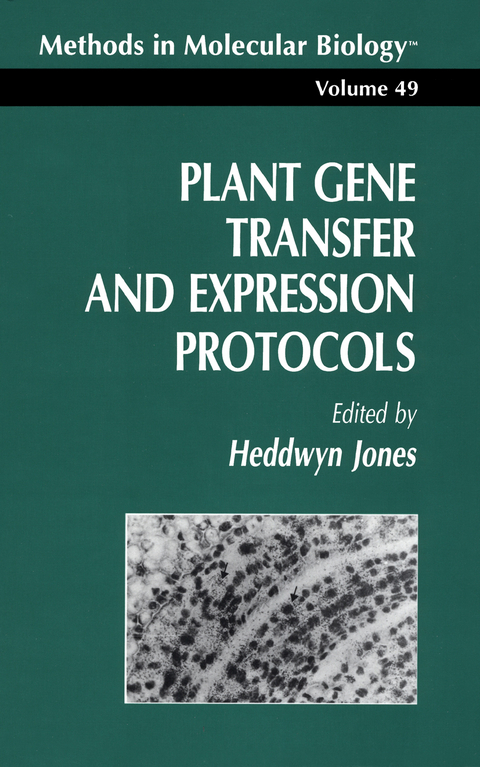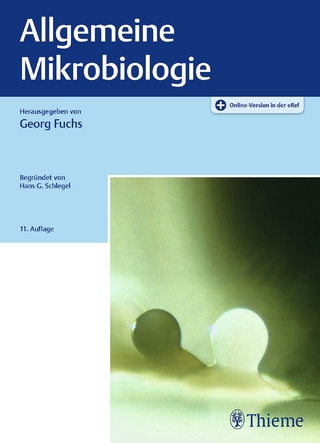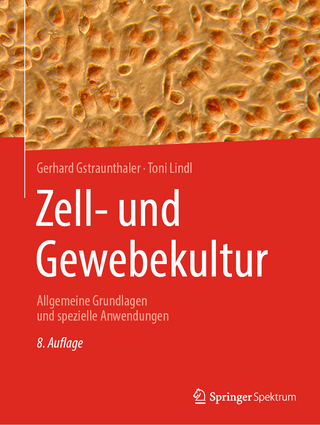
Plant Gene Transfer and Expression Protocols
Humana Press Inc. (Verlag)
978-1-4899-4059-9 (ISBN)
Agrobacterium-Mediated Transformation.- Tools for Expressing Foreign Genes in Plants.- of Cloning Plasmids into Agrobacterium tumefaciens.- Leaf Disk Transformation Using Agrobacterium tumefaciens-Expression of Heterologous Genes in Tobacco.- Agobacterium rhizogenes as a Vector for Transforming Higher Plants.- Agrobacterium-Mediated Transformation of Arabidopsis thaliana.- Agrobacterium -Mediated Transfer of Geminiviruses to Plant Tissues.- Direct Gene Transfer.- Stable Transformation of Barley via Direct DNA Uptake.- Gene Transfer into Plant Protoplasts by Electroporation.- Transformation of Cereals by Microprojectile Bombardment of Immature Inflorescence and Scutellum Tissues.- Use of Reporter Genes.- The ?-Glucuronidase (gus) Reporter Gene System.- Chloramphenicol Acetyl Transferase Assay.- NPTII Assays for Measuring Gene Expression and Enzyme Activity in Transgenic Plants.- Study of Gene Organization by Southern Blotting and Inverse PCR.- Gene Characterization by Southern Analysis.- Isolation and Characterization of Plant Genomic DNA Sequences via (Inverse) PCR Amplification.- RNA Techniques for Studying Gene Expression.- Isolation of Whole Cell (Total) RNA.- Poly(A)+RNA Isolation.- In Vitro Translation.- Northern Analysis and Nucleic Acid Probes.- Nuclear “Run-On” Transcription Assays.- RNase A/T1 Protection Assay.- Primer Extension Assay.- Applications of RT-PCR.- In Vitro Transcription of Class II Promoters in Higher Plants.- Analysis of Plant Gene Expression by Reverse Transcription-PCR.- In Situ Hybridization to Plant Tissue Sections.- Xenopus Oocytes as a Heterologous Expression System.- Heterologous Expression in Yeast.- Techniques for Studying Chloroplast Gene Expression.- The Isolation of Intact Chloroplasts.- In Vitro Protein Import by IsolatedChloroplasts.- Targeting of Foreign Proteins to the Chloroplast.- Techniques for Studying Mitochondrial Gene Expression.- Isolation of Mitochondria.- Mitochondrial Nucleic Acid Purification and Analysis.- In organello Protein Synthesis.- Immunological Detection of Proteins.- Separation of Plant Proteins by Electrophoresis.- Western Blotting Analysis.- ELISA Detection of Foreign Proteins.- Immunocytochemical Localization of Proteins.
| Reihe/Serie | Methods in Molecular Biology ; 49 |
|---|---|
| Zusatzinfo | 118 Illustrations, black and white; XV, 466 p. 118 illus. |
| Verlagsort | Totowa, NJ |
| Sprache | englisch |
| Maße | 152 x 229 mm |
| Themenwelt | Naturwissenschaften ► Biologie ► Mikrobiologie / Immunologie |
| Naturwissenschaften ► Biologie ► Zellbiologie | |
| ISBN-10 | 1-4899-4059-6 / 1489940596 |
| ISBN-13 | 978-1-4899-4059-9 / 9781489940599 |
| Zustand | Neuware |
| Informationen gemäß Produktsicherheitsverordnung (GPSR) | |
| Haben Sie eine Frage zum Produkt? |
aus dem Bereich


